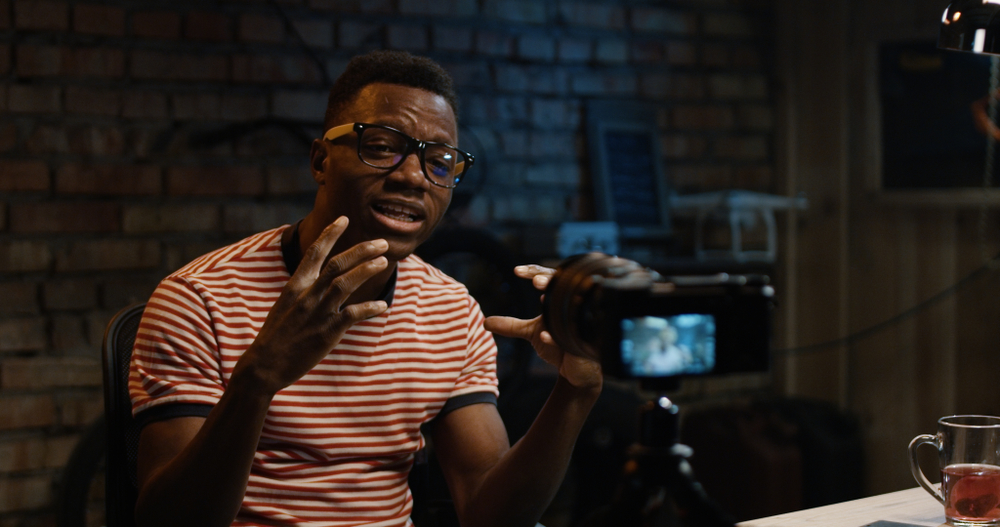
The Best Cameras for Recording Videos: Learn More About the Equipment That Will Help You Make More Professional Videos
A camera in hand and an idea in your mind are enough to start your business.

For all the planning you may do when setting up your online course outline, no amount of prep can replace access to high-quality video and photos. Getting students to enroll is important, and using high-quality equipment makes it that much more likely that they’ll want to stick around. A common method is to employ photographers and videographers, but that’s often too expensive for a lot of people. So what do you do?
Thankfully, creating high-quality photos and videos is something you can do all on your own at a fraction of the cost. You’ll just have to take on the cost of your own camera and accessories. We’ve prepared some tips to help you find the best camera for recording that meets your budget.
No need to break the bank: a smartphone can be the best video camera
There’s a good chance you can already record high-quality videos with your smartphone. So before shopping for cameras, it’s important to understand exactly what your smartphone camera can and cannot do.
Optimize your smartphone camera settings
Your phone may have settings available to modify or otherwise enhance your photos and videos. Many phones allow you to shoot in multiple definitions, including HD, 4K, and, sometimes even 8K.
Actually navigating your phone’s camera settings may not be the same as or even similar to another phone’s camera settings. As such, make sure you experiment with the settings until your photos and videos come out as you like. If you plan to do hands-free recording, you might want to consider using image stabilization.
Clean and maintain your smartphone camera lens
Be sure to keep your phone’s camera lens clear of any debris or fog, and avoid any scratches. You can easily wipe it clean using a dry microfiber cloth. The best way to avoid scratches is to use a smartphone lens protector. Make sure to find the right protector for your phone.
Don’t record vertically!
With a few exceptions, you should always record horizontally. Sure, if you’re making TikTok videos or videos for other social media platforms, vertical videos are standard. But otherwise, horizontal videos are more appealing to watch and come off as more professional. Just use your best judgment.
Use cloud storage to protect your media
Photos and videos can quickly eat up your phone’s internal storage. Since a lot of phones, like iPhones, don’t have expandable storage, you’ll be limited to how much you can store on your phone. But that’s where cloud storage comes in.
Many companies offer a cloud storage service, like Apple’s iCloud and Google Photos. These services often give you a few gigabytes of free storage, and if you want you can pay for more.
Finding the best camera for you
First things first, before looking for a camera you need to figure out what your budget is.
Start with a realistic budget
Be mindful of what you can actually afford to spend on a video camera. You also need to consider the accessories to go with it. A tripod, light sources, an external microphone, a Bluetooth remote, and more are all valuable for producing high-quality content.
Types of cameras
Not every camera is built the same, so you have to figure out which features are most important to you. Here are some different kinds of cameras on the market.
1. Point and shoot: This kind of camera is a more affordable option and is easier to use, but it doesn’t have as many features. This could be a good starting point, but you may want to upgrade to one of the cameras below in the future.
Some options: Sony ZV-1 | Panasonic Lumix LX100 II | Sony RX100 VII
2. DSLR (Digital Single Lens Reflex): This is a popular type of camera due to its high image and video quality, which is accomplished using a series of mirrors to reflect an image into the viewfinder. It has a number of advantages, including low-light capabilities, superior autofocus, and, generally, a better battery.
Some options: Pentax K-70 | Canon EOS 90D | Nikon D850
3. Mirrorless: As the name implies, mirrorless cameras don’t use mirrors. This allows for quicker and easier settings modifications while shooting, meaning that you won’t have to worry as much about editing. They’re generally lighter, making them easier to use while traveling. They tend to be the best cameras for recording video due to these advantages.
Some options: Olympus OM-D E-M10 Mark IV | Fujifilm X-T4 | Sony Alpha 1
Determine the lens options for your best video camera
Picking out the perfect lens for your camera is an important step, as it’s a big determining factor for the quality of your videos. This is the big appeal of DSLRs and mirrorless cameras, since they allow you to pick the right lens for the right moment. You can use the default lens to start, but then you can go with a different lens once you’re ready to upgrade or experiment.
When shopping for camera lenses, it’s essential to understand the following terms:
-
Depth of field: Depth of field refers to the distance between the nearest and farthest objects that are in an adequately sharp focus in a photograph or video.
-
Aperture: This refers to the amount of light that passes through the lens, expressed either as an “F-number” or “F-stop.” This is relevant to the depth of field.
-
Shutter speed: The shutter speed determines how long the camera shutter is open before it captures the image. The faster the speed, the more likely you are to capture fast objects without blur.
-
Focal length: Focal length determines how much of the scene or subject to capture and how magnified it’ll be. This is expressed in millimeters.
-
Zoom lens: Offers the ability to alter your focal length.
-
Prime lens: This lens has only one focal length, which tends to be lighter than a zoom lens.
Figure out what features work best for you
There are a lot of useful features in cameras nowadays, some of which may be more beneficial to you than others. Here are some of the most common features of modern cameras:
-
Bluetooth and/or Wi-Fi: Wireless connections, including Bluetooth and Wi-Fi, are great ways to easily connect your camera to other devices or to the internet. For example, instead of having to use a USB cable to transfer files, you can instead connect to your computer or the internet to transfer the files to your drive or cloud storage service. You can also connect accessories like a microphone and remote.
-
Mic input/output: Cameras that record video are able to record audio as well, but they’re often much lower quality than an external microphone. If you’re using a wired microphone, being able to plug it directly into the camera is quite useful.
-
Rotating LCD screen: This is ideal if you need to easily take a picture or record yourself while still being able to see what’s on the camera’s display.
-
Touchscreen: Many cameras come with a built-in touchscreen to navigate menus instead of having to use buttons.
-
Eye + face tracking: More feature-rich cameras often have both eye and face tracking, allowing you to more easily keep the focus on the subject as necessary.
-
Auto mode: One nice feature for beginners is the ability to adjust settings automatically. It isn’t perfect, but it is often able to pick the best setting for what you need.
Research the best video camera before buying
Buyer’s remorse is a very real thing, so you shouldn’t rush into buying an expensive camera before you do some research. The best thing you can do is to check out a wide variety of reviews for the camera. You can find these on YouTube and on tech review websites. Weigh both the pros and cons of different cameras as well as whether or not it fits your budget.
Beyond reviews, it’s also important that you see the camera in action. Try to find pictures and videos taken with the camera you are looking at, especially if you can find a variety of different kinds of shots and videos. Try to find examples of both scenes and subjects.
Another important thing to note when picking out the best video camera is that a lot of stores have a return policy. So, if you decide that the camera is not for you, you may be able to get it refunded in full. Being able to test it out yourself is one of the best ways to find the best cameras for recording.
By the numbers
| Sony ZV-1 | Panasonic Lumix LX100 II | Sony RX100 VII | Pentax K-70 | Canon EOS D90 | Nikon D850 | Olympus OM-D E-M10 Mark IV | Fujifilm X-T4 | Sony Alpha-1 | |
| Price | $748 | $797 | $1,298 | $576 | $1,599 | $2,796 | $799 | $2,199 | $6,498 |
| Type | Point-and-shoot | Point-and-shoot | Point-and-shoot | DSLR | DSLR | DSLR | Mirrorless | Mirrorless | Mirrorless |
| Weight | 10.37oz | 13.83oz | 10.65oz | 24.27oz | 24.73oz | 35.80oz | 13.5oz | 18.5oz | 26oz |
| Max shutter speed | 1/2000 | 1/4000 | 1/32000 | 1/6000 | 1/16000 | 1/8000 | 1/16000 | 1/32000 | 1/32000 |
| Max aperture | f/2.8 | f/2.8 | f/2.8 | f/8 | f/8 | f/5.6 | f/3.6 | f/2.8 | f/22 |
| Bluetooth? | Yes | Yes | Yes | No | Yes | Yes | Yes | Yes | Yes |
Learn how to create an amazing online course today
There are many steps that go into making a quality online course, and this is just one of them. If you want to up your course creation skills, check out our free ebook on the subject for more tips.





